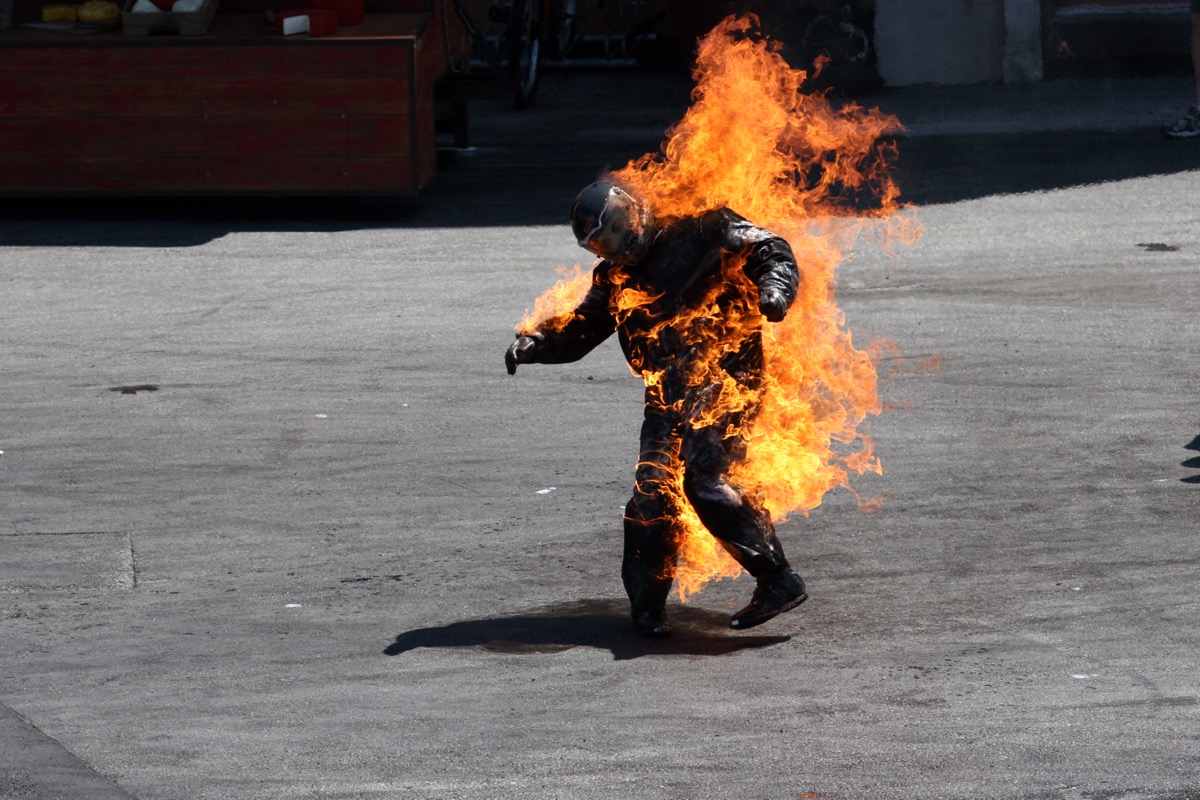Despite the ongoing strike over fair pay, AI in the writers’ room, and paying an actor once to digitally reuse them in productions over and over again, SAG and studios agree: paintdowns and wiggings are not acceptable.
Of course, studios didn’t come around to this position out of the goodness of their hearts. This is the result of decades of advocacy by stunt performers and people of color. As reported by Rolling Stone, nearly 20 years after actor Jason George brought up the issue (which was far from the first time, as this fight has been going on for decades) of stunt doubles wearing blackface or yellowface in a SAG-AFTRA contract meeting, both sides of the negotiating table have finally made the move to eliminate the practices. In the original meeting, George was told, “That doesn’t happen anymore. This isn’t a real problem,” but that the issues would continue to be discussed, as he explained that he’d recently seen it happen with his own eyes.
Stuntwoman Mikal Kartvedt, who helped develop the new language that will soon be implemented in whatever contract SAG and the Alliance of Motion Picture and Television Producers studios eventually reach, explained to the publication that while it may seem like minor wording changes (things like changing “shall endeavor” to “must endeavor” to find appropriate stunt performers), it will be much more effective in compelling productions to do the right thing. They will also strengthen the relatively weak “waiver process” that essentially allowed for the bare minimum while coordinators could say that they’d done their utmost to find someone of that skillset who also matched an actor’s race and gender. Now, it won’t be so easy.
She said, “You call SAG Stunt and Safety and you explain to them why you think you need to conduct a paintdown or wigging. And if you present enough documentation to back yourself, then go with God — safely shoot your gag [industry parlance for ‘stunt’]. However, in almost all instances, SAG will then step in and help you find the appropriate stunt double for the job.”
If wiggings or paintdowns do appear without any sort of discussions being had, both the studio and stunt coordinator will have violated the terms. Not only is it racist and/or sexist to do such a thing its face, but it also takes away opportunities from people of color, women, and even disabled people.
Crystal Santos, another stuntwoman, explained that she’d had an encounter with an older, whiter stuntman who said the reason he did stunts in blackface was to put food on the table for his family. “My answer to him was, ‘Don’t you think that the people of color want that too, and should have had that?'” She said, “I’ve seen a lot of older performers of color who don’t have the pensions their Caucasian peers have, because they were denied opportunities, and they’re hurting very much in their old age.”
There are nearly 5,000 stuntpeople who are a part of SAG-AFTRA, but according to Rolling Stone, membership in a few private stunt groups are how most performers land good, consistent work. They are accused of not being great: being okay with members doing blackface, being largely gendered with men’s groups benefiting members more than women’s, and not being very diverse. But with only experienced performers able to meet the criteria to join these groups, compelling studios to provide opportunities to a wider range of performers is a necessary step in making these groups more accessible and inclusive.
Hopefully, the WGA and SAG-AFTRA strikes will come to an end soon, with good outcomes for writers and performers, and allow for these horrible, outdated practices to come to an end.
(featured image: Getty Images/RBFried)









Published: Aug 1, 2023 05:26 pm